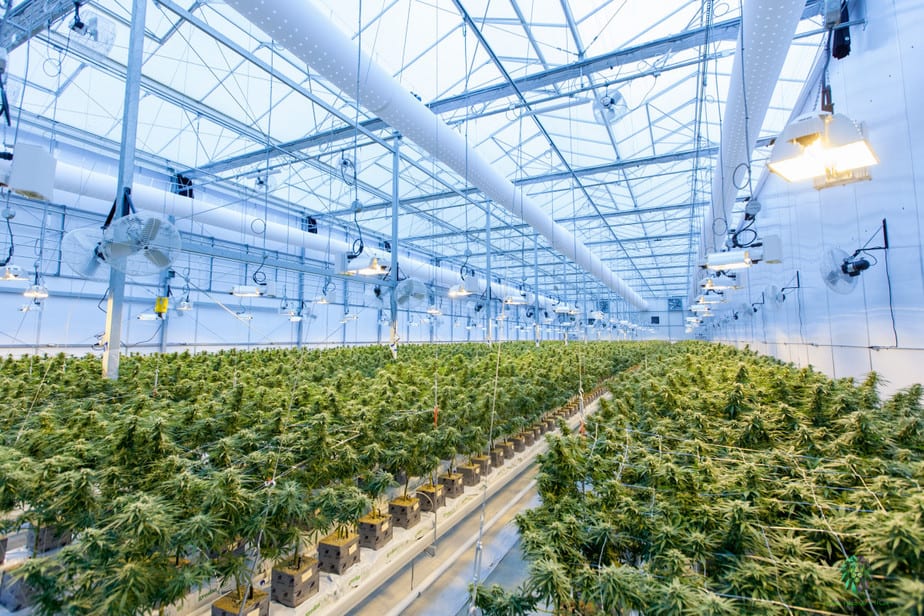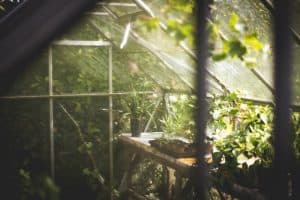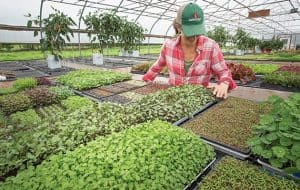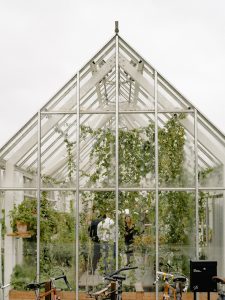Greenhouse grow lights are designed to provide your plants with the needed light to carry out the essential chemical reactions for healthy growth when the sun’s rays just aren’t enough. So, do you need to install greenhouse grow lights? How do you choose the best ones for your greenhouse? Keep on reading to find out.
Do You Need Greenhouse Grow Lights?
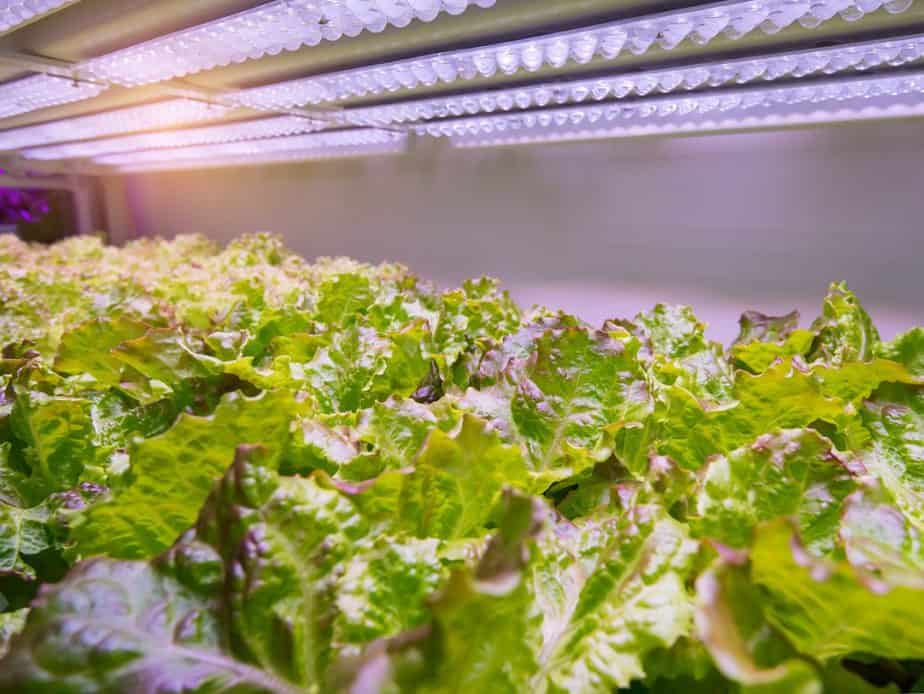
Light is essential for plants to carry out the process of photosynthesis, which allows plants to produce food for growth. When combined with good nutrition from the soil and fertilizers, in addition to regular watering, your plants will grow healthier, stronger, and more resistant to diseases.
A greenhouse is a structure made of transparent walls and roof to allow the sunlight to pass through. It enables you to regulate the climate to promote healthier plant growth when the weather conditions become too challenging. It’s a suitable choice for beginners and first-timers, as well as avid gardeners, as it allows them to grow different plants out of season.
Consider reading a thorough Ultimate Guide to Greenhouses before you purchase a kit or start your DIY build.
Growing plants in a greenhouse protects them from the wind, rain, and cold temperature. It also protects them from animals, birds, and pests that damage the seedlings. However, having access to direct sunlight can be difficult for several reasons.
- You live in an area that naturally doesn’t get a lot of sunlight. During the winter months, your greenhouse will be too dark for the plants to strive.
- You have limited space in your garden, so you have to put the greenhouse in an area where it doesn’t gain access to sunlight.
- You have a lot of trees in your backyard or garden that block the sunlight.
Still, you can help plants grow by installing greenhouse grow lights. You can help yourself growing them by considering one of the 10 best beginner greenhouse plants. This is an artificial light source that helps keep different plants in perfect health.
Grow lights can be used during winter, when the sun sets early, to prolong the duration of light exposure when you’re growing seedlings. You can set up your lights to switch on after the sunset or install them to corners of the greenhouse if they’re not getting enough sun exposure throughout the day. If you want to learn more about caring for a greenhouse when it’s cold then check out our guide on how to grow a winter greenhouse.
Understanding the plants you’re growing, and their requirements will help you decide whether you should get grow lights. Some plants need partial sun exposure, so they can strive, even if your greenhouse doesn’t get enough sunlight. However, if you’re growing plants that need full sun exposure, greenhouse grow lights will be essential. You may also run into a situation in which your greenhouse is receiving too much sun. The solution to too much sun is a shade cloth or shade paint.
What Kind of Greenhouse Grow Lights Should You Get?
In most cases, greenhouse grow lights supplement the sunlight to help plants flourish and prosper. However, in extreme weather conditions, grow lights can become the primary light source, so you need to be careful when choosing the right one for your greenhouse setup. Here are the different types of greenhouse grow lights.
High-Intensity Discharge
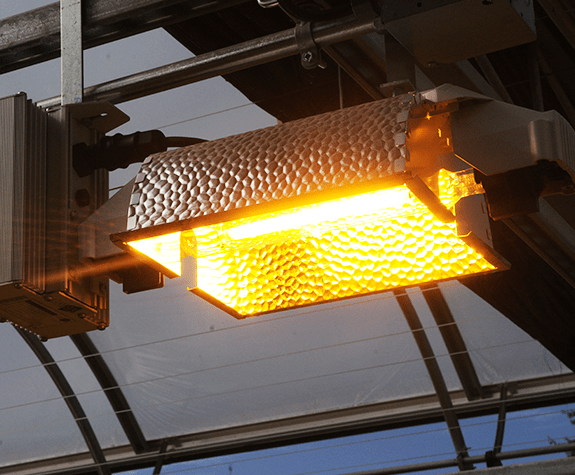
Also known as HID lighting, this type includes metal halide and high-pressure sodium lights. HID lighting consists of the ballast, reflector, and bulb. Some ballasts are switchable, so they can operate MH or HPS bulbs.
The ballast connects to the power supply and sends the current to the reflector, which connects to the bulb to emit the light. HID is the most cost-efficient choice and can cover a larger area. However, you shouldn’t place the bulbs too close to the plants, as HID bulbs are quite strong and might burn your plants.
Metal halide bulbs produce blue or cool light, which encourages bushy growth. High-pressure sodium lights produce red or warm light, which triggers a hormone to stimulate flowers and fruits’ growth. Most people choose reddish or orange light to encourage the development of different plants.
The Best High-Intensity Discharge Grow Light – VIVOSUN 600 Watt HPS Grow Light
Light Emitting Diodes
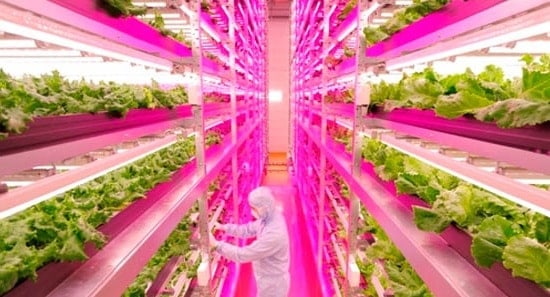
LEDs are incredibly durable and are made of a panel of LEDs and a circuit board. Most LEDs come with a fan to dissipate the heat and increase their lifespan. They’re extremely popular because you’re able to adjust the light spectrum based on the plant’s needs.
Scientific research proves that plants respond better to specific wavelengths, and using the LED technology, you’ll be able to adjust the blue and red light to produce these wavelengths. They also produce less heat, so they’re easier to use than HIDs and might improve growth by strengthening the root system. However, the light doesn’t reach as far from the source as the HIDs.
The Best LED Grow Light – MARS HYDRO TS 1000W Led Grow Light
Fluorescents
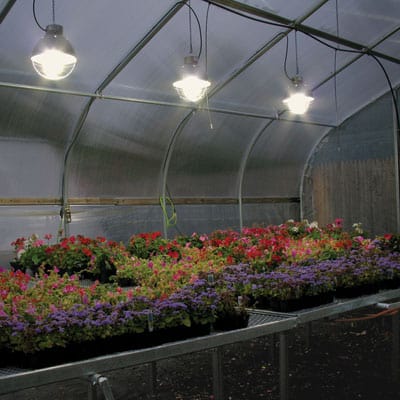
T5 bulbs are full-spectrum fluorescent lights and disperse the light along the length of the bulb. This guarantees even growth in younger plants, while other light sources like HID need to be rotated for uniform growth.
Unlike LEDs and HIDs, fluorescent lights lack the ability to penetrate deep into a plant canopy to stimulate flowering and fruiting plants. They’re easily accessible and more affordable than other types of grow lights.
The light emitted is directed under the light fixture, so this technology doesn’t work for larger areas. They work better as a supplementary light source, unlike other light sources that can be used all-year-round in a greenhouse that was set up in the shade.
The Best Fluorescent Grow Light – iPower T5 Fluorescent Grow Light
Induction Lighting
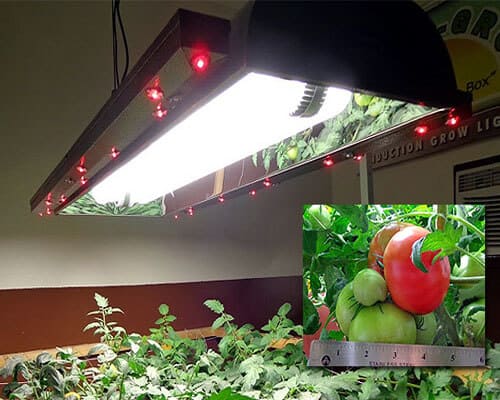
This new technology uses a sealed bulb that relies on electrodes to transmit power. Microwave or radio frequencies pass through the bulb and activate the metals and gases to produce light.
Induction fluorescents have the advantage of standard fluorescents, but they last longer and promote uniform growth in your greenhouse. The coverage is limited to the area under the light source, but the fixture can last for up to 15 years with no need for maintenance.
Sulfur plasma is another induction technology that emits light from a small quartz sphere. This technology produces the light intensity of HID lighting with a light spectrum that is very close to the sunlight. This new technology is suitable for larger areas like HID lights and lasts for long with no issues, but is very expensive.
The Best Induction Grow Light – Vintage Hardware Induction Grow Light
What Problems Can I Face With Greenhouse Grow Lights?
Purchasing a lighting system for your greenhouse offers several benefits, but there are some problems that you might encounter, so you need to take them into consideration.
Not Enough Light
Your plants’ growth will be jeopardized when you don’t have enough lights in your greenhouse. Plants are adaptive, so they will stretch to reach the light from the sun.
All the energy that should be given to seedlings, blooms, and fruits will be wasted as the plants try to have more sunlight to carry out essential chemical activities. As a result, you’ll have top-heavy plants that are prone to diseases and don’t flower or bloom as they should.
As a result, you need to make sure that the grow light you install has enough wattage. It should be close enough to the seedlings during the growth period, usually set up about 1 to 2 inches away.
Some flowering houseplants need to be placed about 12 inches away from the light source to carry out the essential photosynthesis process. Foliage plants can be placed as far as 36 inches away from the grow lights. If you’re mainly growing vegetables, you’ll need more light exposure. It simulates the flowers to bloom to produce the fruit.
Too Much Light
Too much light can harm the plants. Plants need light and water to make oxygen and starch for food. At night, the plants change starch to sugar and store it.
Some gardeners make the mistake of switching on the grow lights all the time to stimulate faster growth, but this can actually affect the plants’ health. Too much light exposure can burn the plants or make them go pale. Plants need darkness, so at least 8 hours of total darkness should be maintained to guarantee better health.
You should also pay attention to the wattage of the light and the distance between the bulb and the plant. When the bulb has a high wattage, it can be too much for your greenhouse plants, affecting their health. The bulb shouldn’t be too close, so it doesn’t burn the plants.
Different plants have different requirements when it comes to the best light intensity. In general, plants that naturally grow in dry areas with abundant sun exposure need more grow lights to thrive. Plants that grow in shady or tropical forests don’t gain enough access to the sun naturally, so you don’t have to install a lot of grow lights in your greenhouse.
Wrong Kind of Light
You need to pick the kind of light that works for your plants. Some types of grow lights produce blue light, which promotes bushy growth, while the red light will be more suitable for flowering plants.
Picking the right HIDs or LEDs is essential for proper plant growth. HIDs should be avoided when you have smaller or weaker plants as the light and heat output can be too intense. LEDs are more versatile because you pick the adequate light spectrum. Fluorescent tubes are more cost-efficient and cooler than other sources.
Uneven Distribution
Even with the best grow light, your greenhouse plants might suffer if you don’t install the light properly. Several plants have different light requirements, but in general, you need to distribute 20 to 40 watts of light per square foot of your greenhouse area.
You should also make sure that the light is able to reach all the leaves, so you need to space your plants properly to make sure that the bigger ones aren’t keeping the smaller ones in the shade.
The size of your greenhouse has a big impact on the type of grow lights you choose. If you have a bigger greenhouse, it will be a good idea to install HIDs, as they have a big coverage area.
Fluorescent lights can also emit enough light to cover a larger area, and they produce less heat. They should be installed adequately to cover the whole area in the greenhouse. LEDs can work for bigger greenhouses if you distribute them evenly.
How Long Should You Keep Grow Lights Be On?
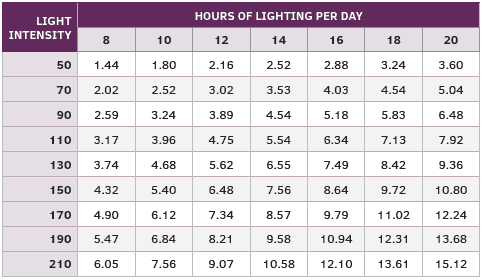
Although light is essential for plant growth, all plants need a rest. The darkness is vital to carry out other chemical processes in your plant’s body, so the light doesn’t have to be switched on 24/7. This is why it’s recommended to install a timer to control how long your grow lights will be switched on.
Plants are divided into three categories when it comes to their daily needs for light. Short-day plants need about 12 hours of light or even less to promote blooming. Too much light can actually harm these plants. If you’re growing azaleas and begonias in a greenhouse that has adequate sun exposure, you might not have to install grow lights at all.
Long-day plants need between 16 and 18 hours of light exposure for appropriate growth. Most vegetables and garden flowers are long-day plants and need more light when the seedlings are growing.
Day-neutral plants like foliage plants and geraniums need between 8 and 12 hours of light all-year-round. This means that you might only switch on the grow lights when the day is shorter, and your greenhouse doesn’t have access to enough sunlight during the winter season.
Wrap Up

Grow lights are important to help plants thrive in a greenhouse. They will allow plants to grow if the greenhouse is set up in the shade or the day is shorter.
There are several types of grow lights available, and each one of them works for specific plants. This is why as a gardener, you need to do some research regarding the initial cost of setting up the light, the type of plants you have, their needs, and the size of the greenhouse.
Some technologies are still evolving, so they’re more expensive, although they’re designed to overcome the shortcomings of last year’s technologies. In the end, there are several options to choose from to provide your plants with the needed light all-year long. and you should choose based on your specific needs.

